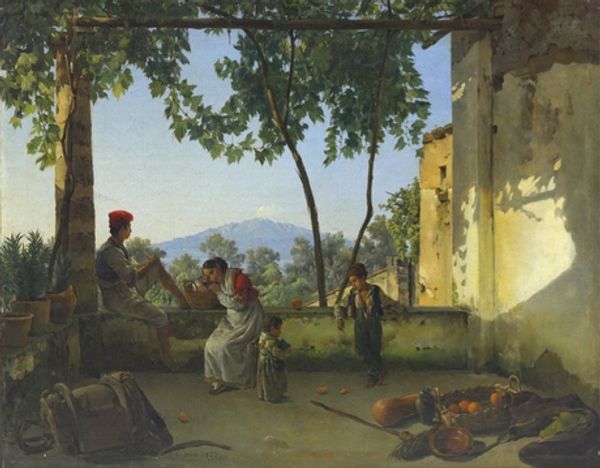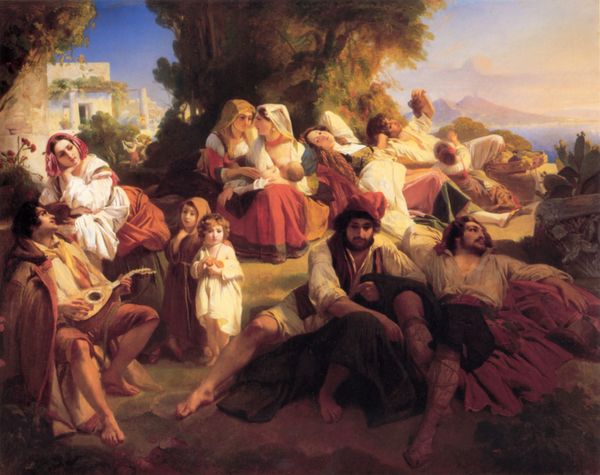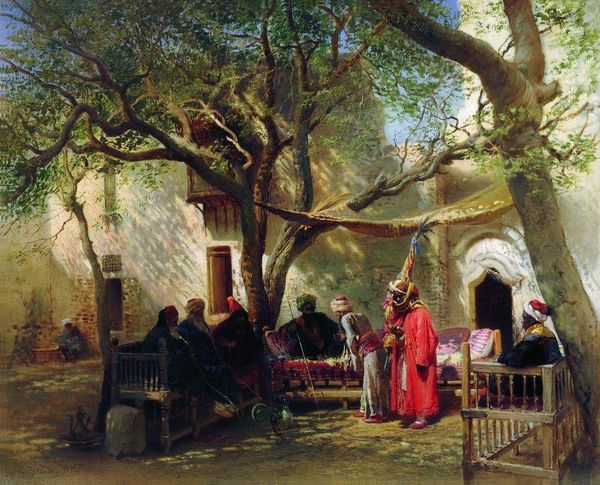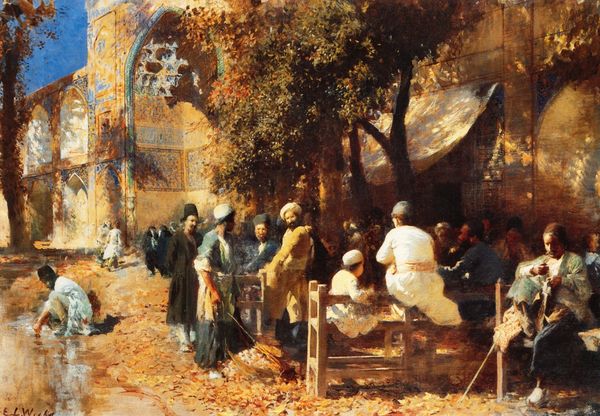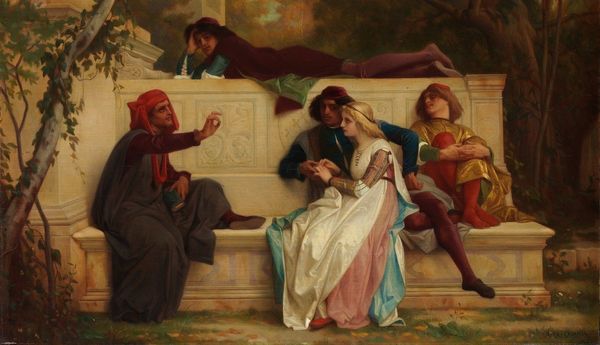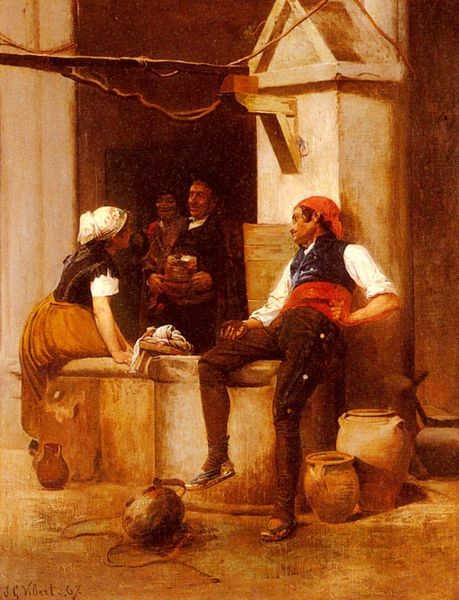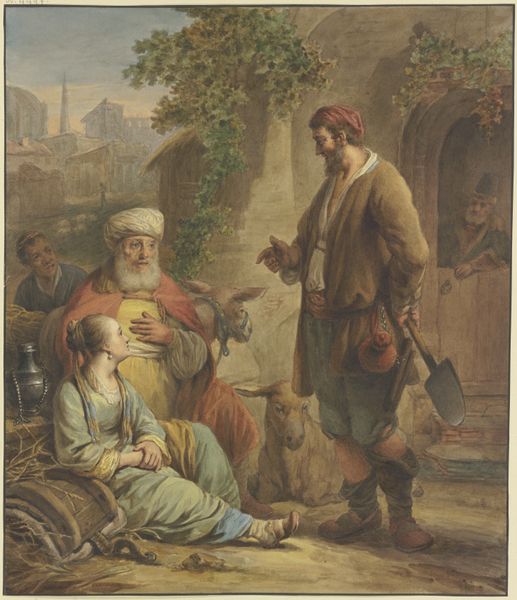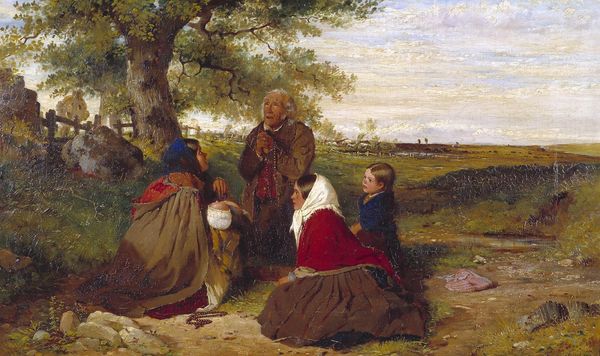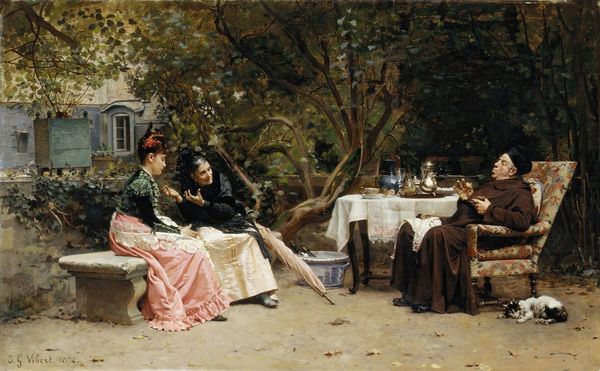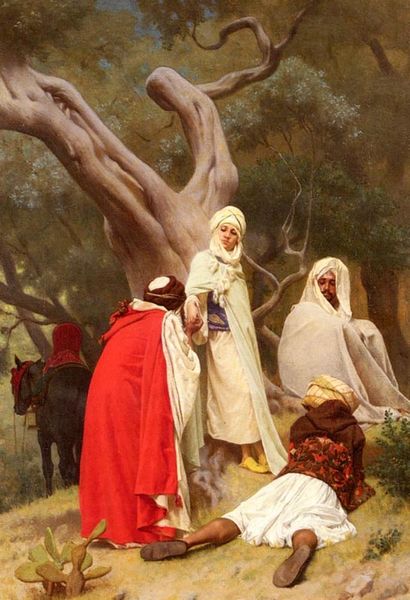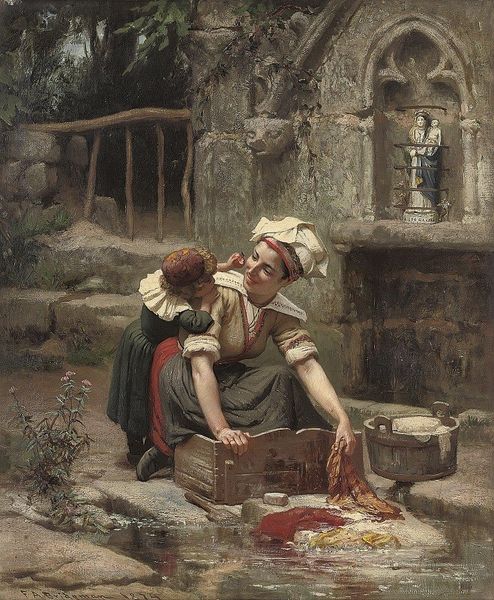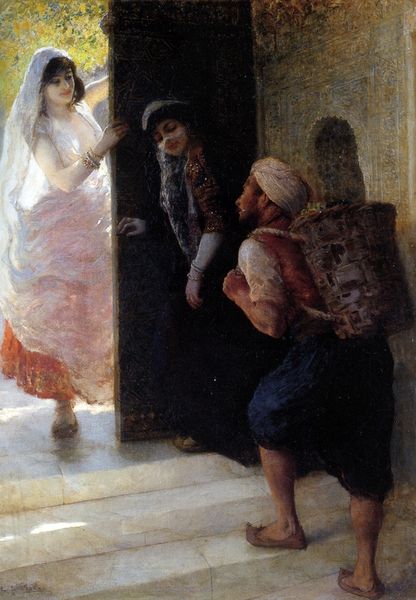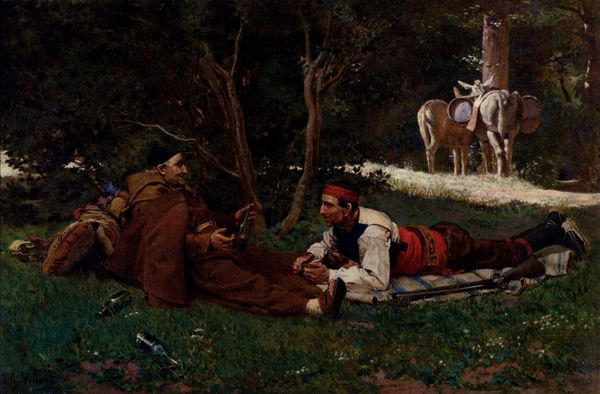
painting, oil-paint
#
portrait
#
narrative-art
#
painting
#
oil-paint
#
landscape
#
genre-painting
#
history-painting
#
academic-art
Copyright: Public domain
Editor: We’re looking at Vincenzo Cabianca's "Tuscan Novelists (Storytellers) of the Fourteenth Century," an oil painting from 1860. It depicts a group of people gathered in what appears to be an Italian garden. It strikes me as very staged, yet intimate at the same time. How would you interpret this work? Curator: Well, aren’t we all storytellers, darling? This scene, while rooted in the historical idea of Tuscan novelists, speaks to something eternally human: the need to gather, share, and listen. Cabianca transports us back in time but also subtly reflects his own. The academic style seeks to both educate and delight the eye. Editor: I see what you mean about the "eternal human" aspect. What do you think is the most interesting element in this composition? Curator: For me, it's the light, isn’t it always? It washes over the scene, creating pockets of intimacy and intrigue. Observe how the faces are illuminated, drawing our gaze to their expressions as if inviting us to join their circle and discover our inner raconteur. The muted palette reinforces the nostalgia. Doesn’t it whisper tales of romance and remembrance? Editor: That's a great observation. I was so focused on the figures, I missed how subtly the light emphasizes their engagement with one another. Curator: Yes! Cabianca is gently reminding us that we are not so different. Perhaps he suggests we are still enchanted by a well-spun yarn today as they were centuries ago. What do you think Cabianca thought about the oral tradition? Editor: Hmm, he appreciated that sharing stories connected us as people. I really gained new insights today! Curator: Exactly! I think, as always, we only add to a story by discussing and reinterpreting it together.
Comments
No comments
Be the first to comment and join the conversation on the ultimate creative platform.
